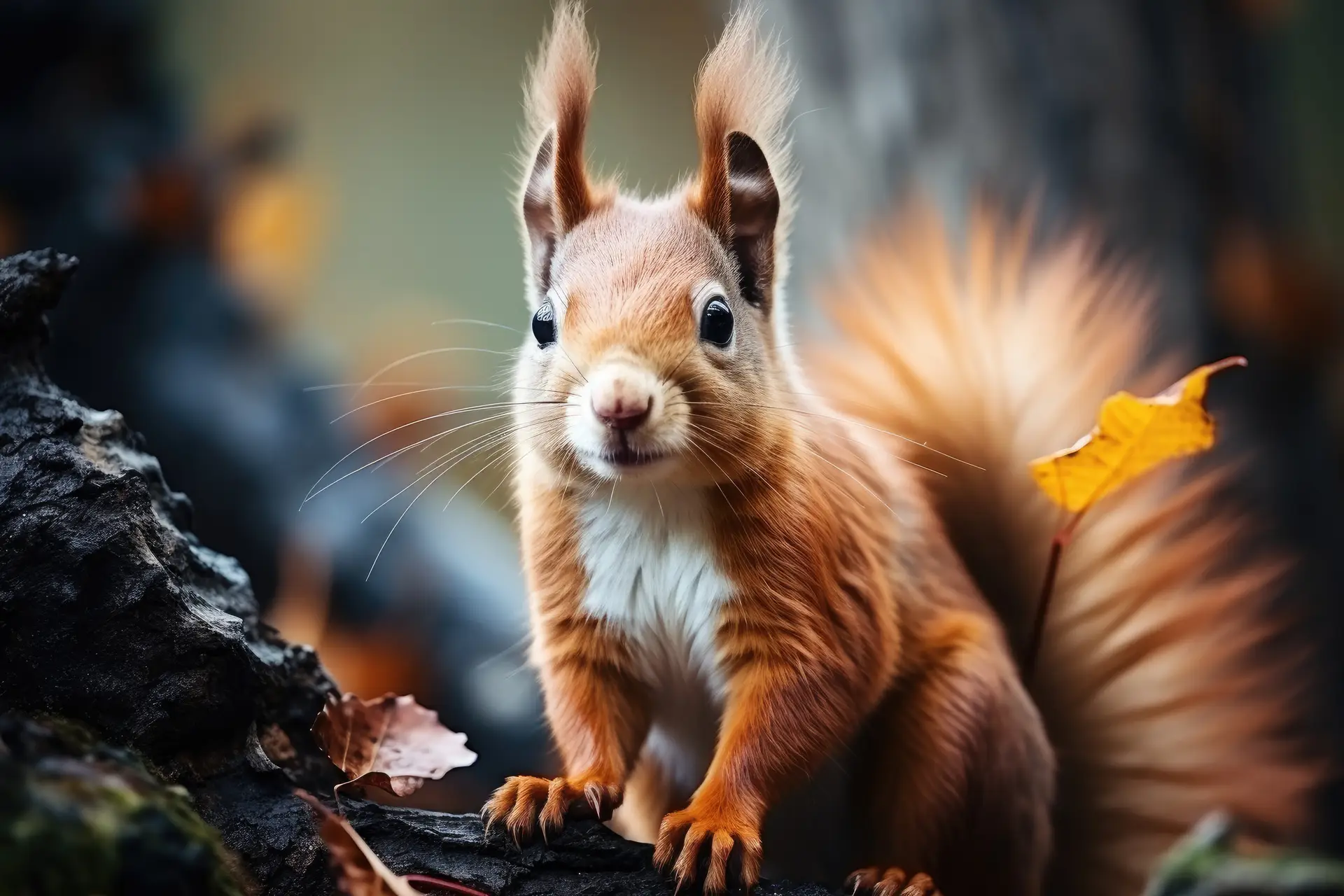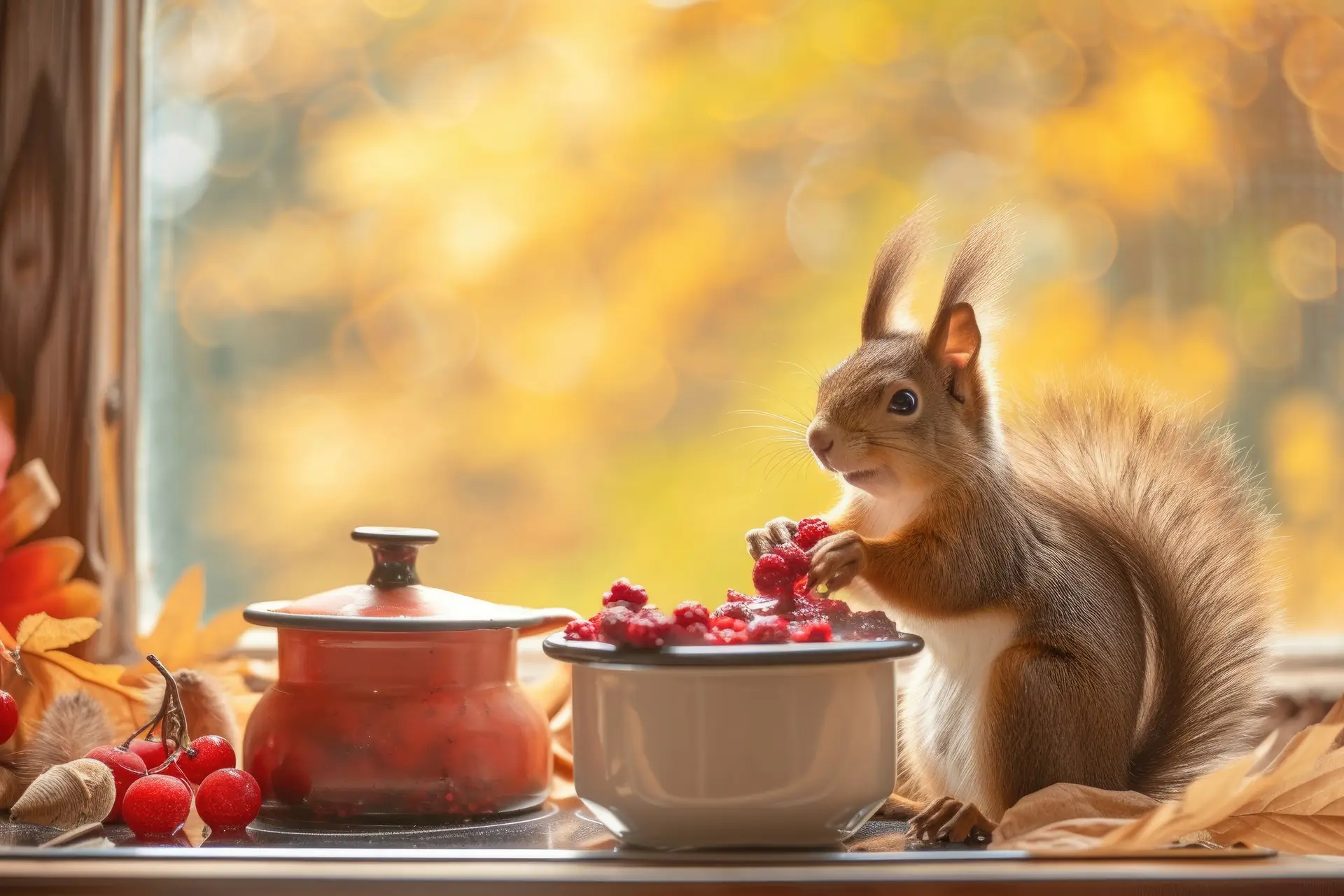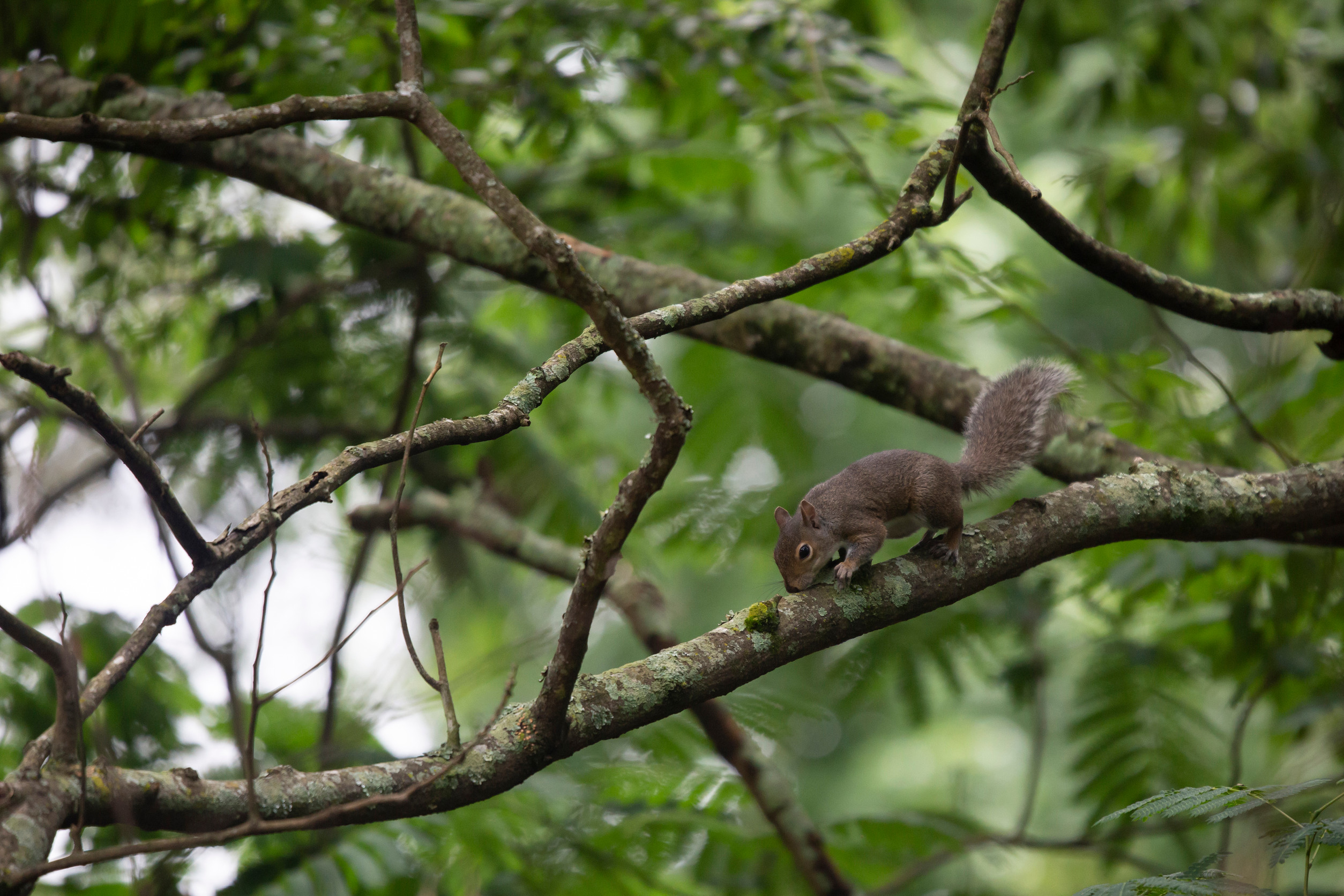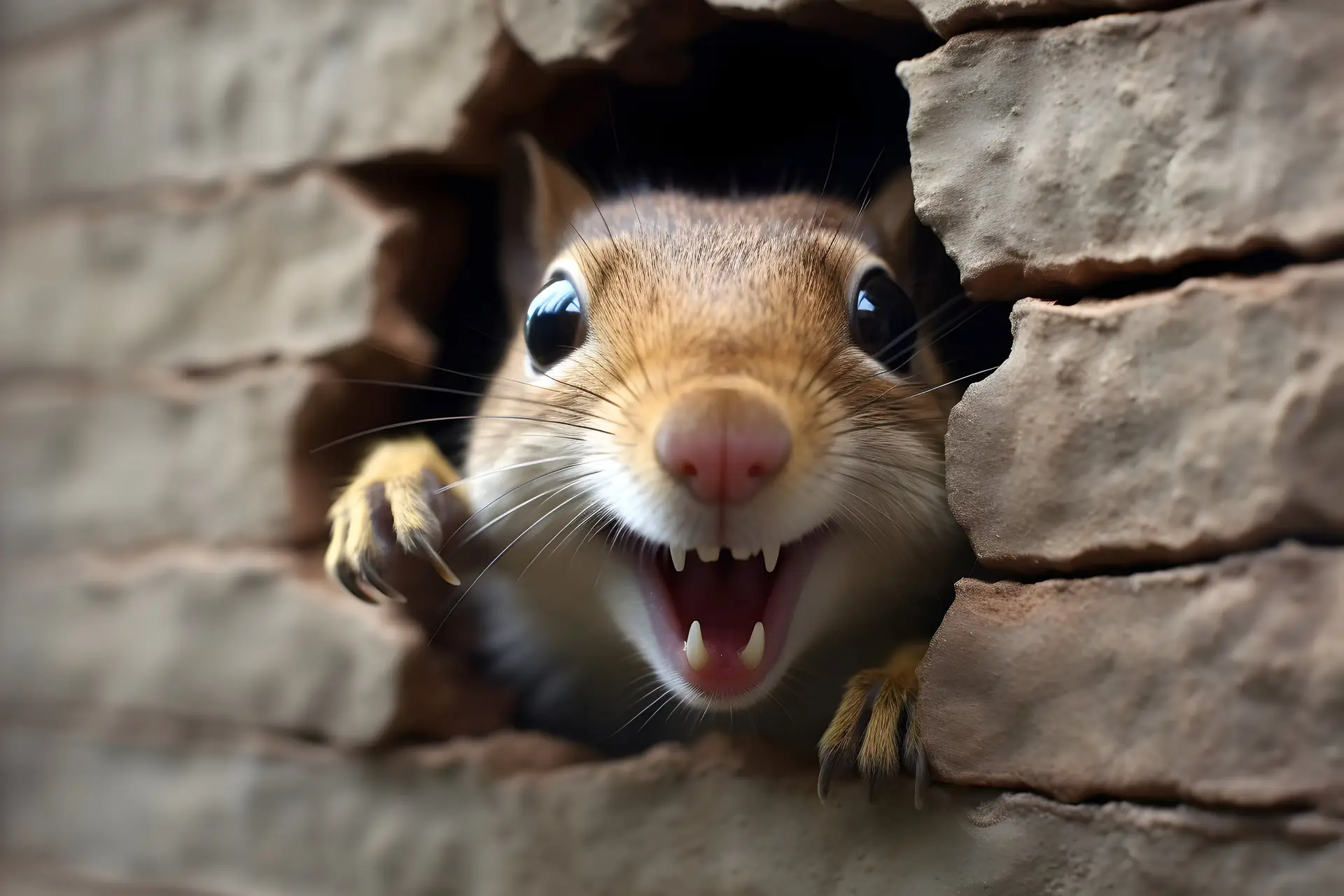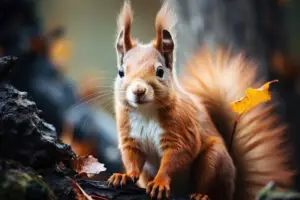Are strange noises from the attic or walls disrupting your peace and quiet, especially during the day? If you’re a homeowner in the Vancouver, WA, or Portland, OR area, that scratching and scurrying could very well be squirrels in your house. While they’re a common sight darting through our Pacific Northwest neighborhoods, finding them inside your home signals potential trouble – from frustrating property damage to potential health concerns. It’s an unsettling discovery, and True Guard Pest & Wildlife understands the stress this causes. We specialize in resolving these unwanted houseguest situations safely and effectively for local homeowners like you.
Spotting the Signs: Is a Squirrel Sharing Your Home?
Squirrels aren’t subtle roommates. If you suspect a squirrel in your home, you’ll likely notice several tell-tale signs:
- Distinctive Daytime Noises: Unlike nocturnal pests, squirrels are most active during the day, particularly around dawn and dusk. Listen for scurrying, scratching, or scampering sounds coming from the attic, ceiling voids, or walls. You might also hear gnawing sounds or even the odd rolling sound of nuts they’ve stashed.
- Visual Evidence Inside: Finding droppings is a key indicator. Squirrel droppings are typically ⅜ to ½ inch long, oblong with slightly rounded ends, and dark brown or black. They’re often found concentrated in attics or crawl spaces where squirrels are nesting. You might also see disturbed or shredded insulation, chewed wood, damaged vents, or stockpiles of nesting materials like leaves, twigs, paper, or fabric – clear signs of squirrels in your house.
- Exterior Clues: Check around your roofline for damage. Squirrels often chew holes near soffits, fascia boards, roof vents, or shingles to gain entry. Look for gnaw marks or visible openings that could allow access for a squirrel in your home.
- Unpleasant Odors: A persistent musty or ammonia-like smell, often strongest in certain areas, can indicate an accumulation of squirrel urine and feces. In unfortunate cases where a squirrel becomes trapped and dies, a powerful decay odor can permeate the home.
How Squirrels Find Their Way Inside (Common PNW Entry Points):
Squirrels are incredibly agile climbers and persistent explorers. They can squeeze through surprisingly small gaps (around 1.5 inches) and are adept at exploiting weaknesses in a home’s exterior, especially here in the Pacific Northwest where weather can wear down materials. Understanding how they get in helps prevent squirrels in your house:
- The Roofline is Prime Territory: Squirrels often gain access via the roof. Overhanging tree branches or nearby utility lines provide easy highways. Once on the roof, they target vulnerabilities like:
- Gaps: Small openings where soffits meet siding, damaged fascia boards, or warped shingles.
- Vents: Unscreened or damaged gable vents, roof ridge vents (often attracted by escaping warm air), or plumbing vent stacks with deteriorated rubber mats.
- Chimneys: Uncapped chimneys offer a direct route inside.
- Lower Entry Points: Sometimes access occurs lower down through unsecured crawl space vents, gaps around pipes or utility lines entering the foundation or walls, or damaged siding, particularly at corners. Even dryer or bathroom exhaust vents with missing or damaged covers can be exploited.
The Risks: Why Squirrels in the House Are a Serious Problem:
Allowing squirrels to reside in your home isn’t just noisy; it poses real dangers. The reality of having squirrels in your house goes beyond simple annoyance and includes significant risks:
- Significant Structural Damage: Their constant need to gnaw means they chew through wood beams, siding, ductwork, and even plastic pipes.
- Critical Fire Hazard: Squirrels frequently chew on electrical wiring found in attics and walls, stripping the insulation and creating a high risk of house fires – a major danger associated with having a squirrel in your home.
- Compromised Insulation: They tear apart insulation for nesting, reducing your home’s energy efficiency and potentially leading to moisture issues.
- Health Concerns: Squirrel droppings and urine contaminate insulation and storage areas. While direct transmission is rare, their waste can contain bacteria (like Salmonella), and they can carry parasites like fleas and ticks that could potentially infest your home or pets.
- General Nuisance: The constant noise, especially early in the morning, can be incredibly disruptive to your household.
Prevention: Keeping Squirrels Out Before They Get In:
The best strategy is proactive prevention to avoid dealing with squirrels in your house in the first place. Making your home less accessible and attractive can deter squirrels:
- Maintain Your Home’s Exterior: Regularly inspect your roof, soffits, and siding. Promptly repair any damage. Seal gaps larger than ½ inch with durable materials like hardware cloth or metal flashing. Install secure covers on vents and a cap on your chimney.
- Manage Access Routes: Keep tree branches trimmed at least 6-8 feet away from your roofline and sides of the house. Consider removing vines that climb walls.
- Reduce Outdoor Attractants: Securely close trash and compost bins. Avoid leaving pet food outdoors. If you feed birds, use squirrel-resistant feeders or place them away from the house where squirrels can’t use them as a jumping-off point to your roof.
Dealing with an Active Infestation: Why Professional Help is Key
Once squirrels are established inside your home, DIY methods are rarely sufficient and can be risky. Professional help is usually required to effectively deal with squirrels in your house:
- Ineffective Deterrents: While things like bright lights, loud noises, or strong smells (like peppermint oil or cayenne) might temporarily annoy a squirrel, they almost never convince an established squirrel, especially one with young, to leave permanently. Squirrels quickly acclimate to these disturbances when they have found safe shelter in your home.
- Safety and Legal Concerns: Trying to trap or handle squirrels yourself poses risks of bites or scratches (especially if cornered) and potential exposure to diseases or parasites. Furthermore, trapping and relocating wildlife is subject to specific regulations in Washington and Oregon, which homeowners may not be aware of. You also risk accidentally separating a mother from her dependent young when dealing with squirrels in your house.
True Guard’s Professional Squirrel Removal Process:
True Guard Pest & Wildlife offers a comprehensive and humane solution designed to resolve squirrel in the home situations efficiently for Vancouver and Portland homeowners:
- Thorough Inspection: We identify all entry points, locate nesting sites, and assess the extent of the infestation and any damage caused by the squirrels in your house.
- Humane Trapping & Removal: We use proven, effective methods compliant with all WA and OR state and local wildlife laws to remove the squirrels currently in your home. Special care is taken if babies (kits) are present.
- Expert Exclusion: This is crucial for long-term success. We professionally seal all identified entry points using durable materials designed to prevent squirrels from getting back in your house.
- Cleanup & Sanitation Advice: We can advise on or assist with removing contaminated materials (like soiled insulation or nesting debris) and sanitizing affected areas to address health concerns and odors caused by the squirrels in your home.
What to Expect (Timeline):
Squirrels nesting in your home won’t leave quickly on their own, especially if young are present. The professional removal process typically takes a few days for trapping, followed by another day or two for thorough exclusion work, depending on the complexity and number of entry points allowing squirrels in your house.
Reclaim Your Home from Squirrels
Discovering squirrels in your house requires prompt action to prevent escalating damage and potential hazards. While prevention is ideal, if squirrels have already made their way inside your home in the Vancouver or Portland area, rely on professional expertise. Contact True Guard Pest & Wildlife today for a reliable inspection and humane, effective solutions to your squirrel in the home problem.

